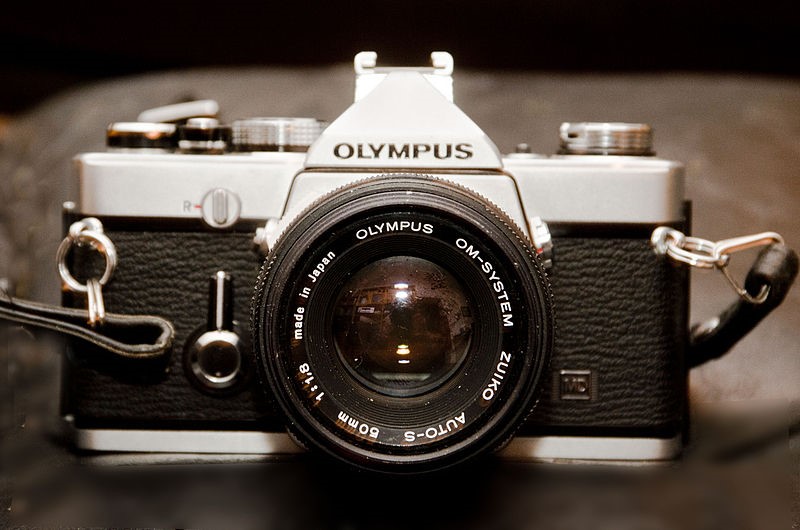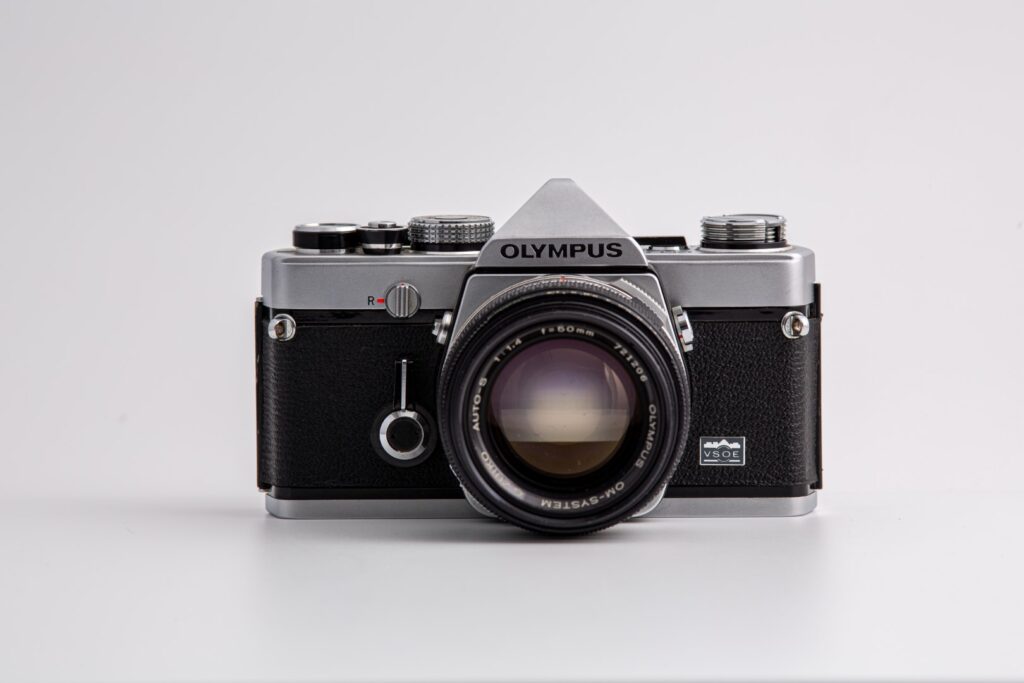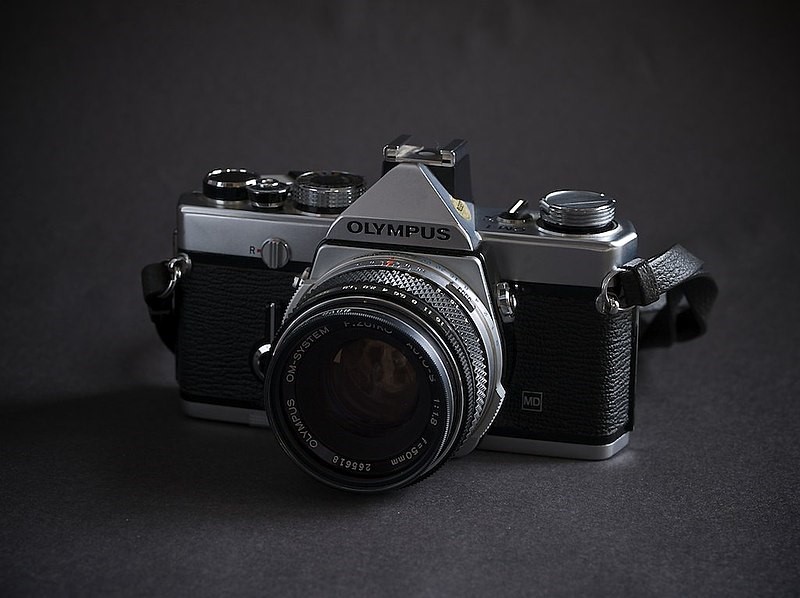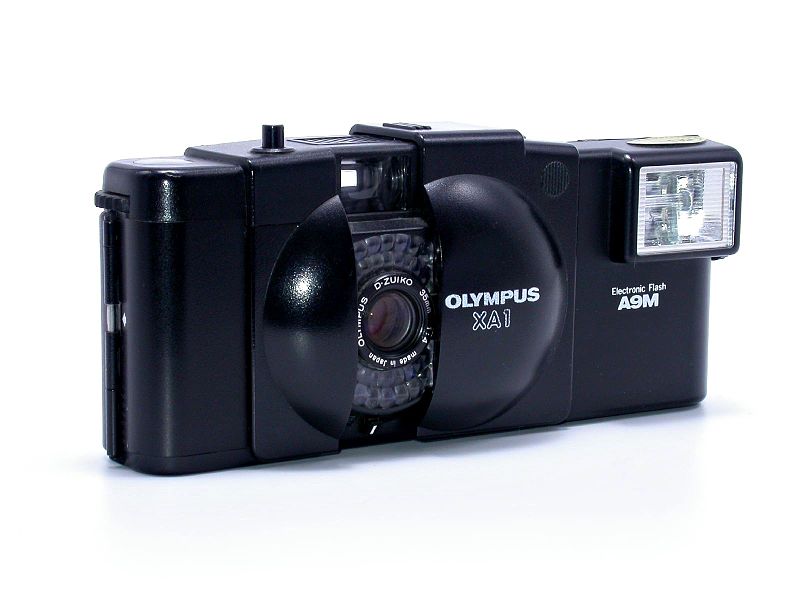The Olympus OM-1, introduced in 1972, was a revolutionary camera model that opened up new horizons for photographers everywhere. Its compact size, mechanical reliability, and remarkable image quality, among other traits, quickly made it a beloved tool for both professionals and enthusiasts. However, today, users of this vintage camera often face a common issue – the batteries.
Originally, the Olympus OM-1 was designed to operate using a 1.35V mercury battery. Mercury batteries were renowned for their steady voltage supply, ensuring the accurate operation of the OM-1’s light meter. Unfortunately, these batteries have since been discontinued due to environmental concerns surrounding the use of mercury.
As an Olympus OM-1 owner, this presents a challenge, but don’t worry – there are still several reliable options to keep your camera operational. The closest replacement available on the market today is the Wein MRB625 1.35V Zinc-Air Battery. This battery type provides a similar stable voltage to the original mercury battery, making it an ideal choice for the OM-1.
However, it’s worth mentioning that the Wein MRB625 isn’t the only option. There are a few more battery alternatives that work with the Olympus OM-1, which we will explore in detail in this article. Each type of battery comes with its own pros and cons, which can significantly affect your camera’s performance and maintenance routine.
So, whether you’re a seasoned Olympus OM-1 user looking for replacement batteries, or a newcomer intrigued by the charm of this classic camera, keep reading. By understanding more about these battery options, you can make an informed choice that best suits your photography needs, and ensure your Olympus OM-1 continues to capture amazing images for years to come.

Does the Olympus OM-1 require batteries?
The Olympus OM-1 is fundamentally a mechanical camera, meaning that it does not require batteries for most of its operations. It allows for manual focus and mechanically controlled shutter speeds ranging from 1 second to 1/1000th of a second, and Bulb mode. This means that even without a battery, you can still operate and take photos with your Olympus OM-1.
However, for precise control over exposure, the camera does have a built-in light meter, which requires a battery to function. The light meter in the Olympus OM-1 is an indispensable tool, particularly for photographers who want to ensure they are correctly exposing their shots.
The original battery type used for this purpose in the Olympus OM-1 was a 1.35V Mercury cell. These batteries provided a steady voltage output across their lifespan, ensuring consistent and accurate meter readings.
While the Olympus OM-1 can function without a battery using manual settings, having a functioning light meter simplifies the process of getting a well-exposed shot, especially for those not comfortable using the Sunny 16 rule. For those interested in learning how to estimate exposure settings without a light meter, check out our article on the Sunny 16 rule.
What Batteries Should You Use for Your Olympus OM-1?
Now that we’ve established the importance of a battery for the Olympus OM-1’s light meter, let’s explore the available options that can replace the discontinued 1.35V Mercury cell.
Wein MRB625 1.35V Zinc-Air Battery
The Wein MRB625 is the closest replacement available on the market for the original mercury battery. It’s a zinc-air battery that also produces a steady 1.35V output, which is necessary for accurate light meter readings in the OM-1.
Unlike alkaline or silver-oxide batteries, zinc-air batteries use air as an energy source, which allows them to maintain a constant voltage output throughout their lifespan. However, once the seal on a zinc-air battery is removed and it starts interacting with air, its lifespan starts, whether it’s used or not. Therefore, it’s recommended to purchase these batteries only when you’re ready to use them.
However, one potential downside to consider is that the Wein MRB625 has a relatively short battery life. In addition, these batteries can be more expensive than other alternatives, so using them continuously can become costly in the long run, but overall this is definitely the easiest and most convenient option.
Hearing Aid Batteries
Zinc-air batteries are commonly used in hearing aids, which means that you can find suitable 1.35V batteries in this category at a better price than the Wein MRB625. For example, size 675 hearing aid batteries can be used with the OM-1. However, these do require some adjustment or an adapter to fit correctly, the cheapest way is to get a correctly sized o-ring from the hardware store. This is a cheaper option, but you will still face the problem of the short battery lifespan.
Alkaline Battery
A common and affordable replacement option is the 1.5V alkaline battery, also known as the LR9 or V625U. These batteries are easy to find and fit perfectly into the Olympus OM-1’s battery compartment. However, the voltage of alkaline batteries is not stable. It starts at 1.5V and gradually drifts down to 1.35V – the voltage of the original Mercury cell – and then lower still as the battery life progresses. You can also use the very common LR44 batteries together with an adapter for the size.
This unstable voltage can be problematic for the OM-1, which relies on a steady reference voltage for accurate meter readings. As a result, when using an alkaline battery, you may find that you need to constantly adjust your compensation or ISO to maintain accurate exposures. You can also use the very common SR44 batteries together with an adapter for the size.
Silver-Oxide Battery
Silver-oxide batteries, such as the S625PX, are another option for your Olympus OM-1. Like alkaline batteries, these also have a 1.5V output. However, silver-oxide batteries maintain a more consistent voltage output over their lifespan.
This steady 1.55V means that, while you’ll still need to compensate for the higher voltage, the required compensation is constant. The higher voltage can potentially lead to up to two f-stops of underexposure. However, by adjusting the ASA setting or compensating by a fixed number of stops, you can ensure consistent, accurate exposures throughout the life of the battery.
This consistency, paired with the fact that silver-oxide batteries generally have a longer lifespan than their alkaline counterparts, makes them an appealing option for many photographers. But remember, the voltage is still higher than the original 1.35V Mercury cell, which may require some getting used to.
Adapted 1.5V Battery
There are also adapters available that can be used with a 1.5V battery to reduce its output to 1.35V, suitable for the Olympus OM-1. This can be a good option if you want to use commonly available 1.5V batteries and still ensure accurate meter readings. Note that you need to buy an adapter with voltage reduction – not only an adapter for the size. You can find such adapters on eBay or at smallbattery.uk double check that it says something about voltage reduction somewhere in the listing. Make sure to always use the adapter with silver-oxide batteries, do not use alkaline batteries as you will still have the problem of the gradually declining voltage.
Camera Modification
Another option, albeit more drastic and possibly warranting professional assistance, is to modify the OM-1’s light meter circuit to accommodate 1.5V batteries. Some experienced camera technicians can perform this modification. This would allow the OM-1 to give accurate readings with readily available LR44 or SR44 batteries. Remember, this modification should be done by a professional to avoid damaging the camera. Check out the following video in order to find out how to do this modification.
Conclusion – What is the Best Overall Option?
Firstly, using alkaline batteries is not advisable. Their unstable voltage output leads to continuously varying meter readings, which can be a significant inconvenience. Only opt for alkaline batteries if you find yourself in a situation where no other options are available. The option of using silver oxide batteries, SR44 specifically, with an adapter can be a viable choice, but you will constantly have to compensate for the deviation in voltage. Wein MRB625 or hearing aid batteries, both zinc-air, can be an adequate solution. They offer the correct voltage, but it’s essential to be aware that this option can be quite expensive in the long run. The short lifespan of these batteries implies that you’ll need a constant supply of spare batteries, adding to the overall cost. Camera modification is a more drastic option. It involves altering the camera’s light meter circuit to accept 1.5V batteries. While it could be a great solution, it carries risk and a significant cost. Unless you’re an expert yourself or willing to pay for a professional service, this may not be a viable option for many.
Considering all these aspects, the most recommended and best overall option would be to purchase a voltage reducing adapter and use it with SR44 silver oxide batteries. This combination provides a stable voltage close to the original mercury cell and maintains consistent meter readings. Silver oxide batteries also have the advantage of being readily available and affordable. Make sure to always use silver oxide batteries due to their stable voltage output throughout their lifespan.
Where Can You Get a Battery for the Olympus OM-1?

Finding batteries for the Olympus OM-1 isn’t as challenging as you might think. Most of the battery types we’ve discussed are readily available in stores and online marketplaces. From electronics and camera stores to e-commerce platforms like Amazon and eBay, you can usually find what you’re looking for.
For the Wein MRB625 or hearing aid batteries, check in pharmacies or stores specializing in hearing aids as they frequently carry a wide range of sizes, including those compatible with the OM-1. Camera specialty stores and online retailers may also stock the Wein MRB625 due to its popular use as a replacement battery for vintage cameras.
If you’re opting for the voltage reducing adapter combined with SR44 silver oxide batteries, both components can usually be found in electronics stores or online. Remember to always double-check compatibility before making a purchase.
For camera modification, you’ll likely need to consult a professional camera technician who can perform the modification and source the appropriate battery.
Here is a table summarizing the most common names for the batteries we discussed:
| Battery Type | Most Common (Recommended) | Other Common Names |
|---|---|---|
| Zinc-Air (Wein MRB625) | Wein MRB625 | |
| Zinc-Air (Hearing Aid) | Size 675 | |
| Alkaline (LR44) – needs an adapter / voltage reducing adapter | (LR44) Duracell 76 A | A544, 4A76, GP476 |
| Silver Oxide (SR44) – needs an adapter / voltage reducing adapter | (SR44) Duracell 303/357/76 | EPX76, SR44W, 357 |
| Alkaline (LR9/V625U) | 625U | A625 |
| Silver Oxide (S625PX) | S625PX | EPX625G |
Always remember to dispose of your used batteries responsibly by taking them to a local recycling center or using a battery recycling service. This helps reduce environmental harm caused by improperly discarded batteries.
How Long Does the Olympus OM-1 Battery Last?
The battery lifespan for the Olympus OM-1 can vary greatly depending on the type of battery used, how frequently you use your camera, and the specific settings employed. Here’s a general comparison of the expected lifespans for the different battery options we discussed:
- Zinc-Air (Wein MRB625): Zinc-Air batteries such as the Wein MRB625 generally last a couple of months of regular use. They start discharging as soon as the seal is removed, and their lifespan is not dependent on usage. For less frequent photographers, the replacement cycle might be too short, leading to higher costs over time.
- Zinc-Air (Hearing Aid Batteries): Similar to the Wein MRB625, hearing aid batteries also have a lifespan of a couple months after the seal is removed.
- Alkaline (LR9/V625U and LR44): Alkaline batteries typically last longer than Zinc-Air batteries. You can expect them to last around 1 year, depending on usage.
- Silver Oxide (SR44 and S625PX): Silver Oxide batteries are known for their impressive longevity. They can often last a lot longer up to several years, again depending on how often you use your camera.
Remember that these estimates are based on general usage, and your experience might vary. If you notice your camera meter giving inconsistent readings, it could be a sign that your battery is nearing the end of its life and needs to be replaced
How to Replace the Battery in Your Olympus OM-1
Replacing the battery in your Olympus OM-1 is a relatively straightforward process, but it’s important to do it correctly to avoid any damage. Here’s a step-by-step guide:

- Locate the Battery Compartment: The battery compartment of the Olympus OM-1 is on the bottom of the camera. You’ll see a small circular cover.
- Open the Battery Compartment: You can use a coin or a similar object to unscrew this cover by turning it counter-clockwise.
- Remove the Old Battery: Once the cover is off, gently shake the camera or use a non-metallic tool to remove the old battery. Be sure to handle the old battery responsibly – don’t throw it in the regular trash as it’s harmful to the environment.
- Insert the New Battery: Place your new battery into the compartment. Ensure the positive side (+), usually the flat side, faces up towards you.
- Close the Battery Compartment: Screw the cover back on by turning it clockwise until it’s secure, but be careful not to overtighten it.
- Check the Camera: Turn on your Olympus OM-1 and make sure the light meter and other functions are working properly. If everything seems to be in order, then you’re good to go!
Remember, if you’re using a voltage reducing adapter with an SR44 silver oxide battery, you’ll need to place the adapter in the battery compartment first, then insert the battery into the adapter.
When Should You Replace the Batteries in your Olympus OM-1?

Determining when to replace the battery in your Olympus OM-1 is a crucial aspect of maintaining your camera’s performance and ensuring accurate meter readings. Here are a few signs and situations that indicate it’s time for a battery replacement:
- Inconsistent Meter Readings: If you start to notice that your camera’s light meter is giving inconsistent or erratic readings, it’s likely that your battery is running low. These readings can become increasingly unreliable as the battery life depletes.
- Battery Lifespan: Different batteries have different lifespans, as discussed earlier. If you know that your battery is reaching the end of its typical lifespan, it’s a good idea to replace it even if you haven’t noticed any performance issues.
- Long Periods of Inactivity: If you haven’t used your camera for a long period, the battery may have discharged or corroded over time. Before using your Olympus OM-1 after a lengthy break, check the battery and replace it if necessary.
- Camera Won’t Turn On: This is an obvious one, but if your camera won’t turn on at all, your battery is likely completely drained or defective. Replace the battery and check if the camera turns on.
- Preventive Replacement: If you’re about to embark on a significant photography project, trip, or event, consider replacing your battery ahead of time, even if it hasn’t entirely run out. The last thing you want is for your camera to run out of power in the middle of an important shoot.
How to Properly Dispose of Used Batteries
When it comes to disposing of used batteries from your Olympus OM-1, it’s important to follow proper disposal practices to protect the environment and ensure safety. Here are some key steps to take:
- Check Local Regulations: Familiarize yourself with local regulations regarding battery disposal to understand specific guidelines in your area.
- Recycling Centers: Locate designated recycling centers or collection points that accept used batteries for recycling. Check with local recycling centers to find drop-off locations.
- Retailer Drop-Offs: Some electronics or battery stores offer battery recycling services. Inquire with nearby retailers to see if they have collection bins or drop-off points.
- Battery Recycling Kits: There are battery recycling kits available for purchase online. These kits include a container for storing used batteries and prepaid shipping to a recycling facility.
- Household Hazardous Waste Facilities: Certain municipalities have facilities for disposing of household hazardous waste, including batteries. Contact your local waste management department or visit their website for information on drop-off locations.
Troubleshooting Common Battery Issues in the Olympus OM-1
While the Olympus OM-1 is a reliable camera, it’s not uncommon to encounter battery-related issues from time to time. Here are some common problems you may come across and steps you can take to troubleshoot them:
- No Power or Malfunctioning Light Meter: If your camera isn’t turning on or the light meter is not functioning correctly, the first step is to check the battery. Ensure it is properly inserted and has sufficient charge. Clean the battery contacts in the camera and on the battery itself to ensure a good connection. If the problem persists, try replacing the battery with a fresh one to see if that resolves the issue.
- Inaccurate Meter Readings: If you notice inconsistent or incorrect meter readings, it could be due to a weak battery. Replace the battery with a new one and make sure it’s the correct type and voltage for your camera. Additionally, ensure that the battery contacts are clean and free from dirt or corrosion, as this can affect the accuracy of the readings.
- Battery Drainage: If you find that your batteries are draining quickly even when the camera is not in use, there may be a short circuit or a problem with the camera’s electrical system. In such cases, it’s advisable to have the camera inspected and repaired by a professional technician to diagnose and resolve the issue.
- Intermittent Power Loss: If your camera intermittently loses power or turns off unexpectedly, it could be due to loose battery contacts. Check that the battery compartment cover is securely fastened and that the contacts are making good contact with the battery. If necessary, clean the contacts to ensure a reliable connection.
- Battery Compatibility: Double-check that you are using the correct battery type and voltage specified for the Olympus OM-1. Using incompatible batteries can result in poor performance or damage to the camera.




